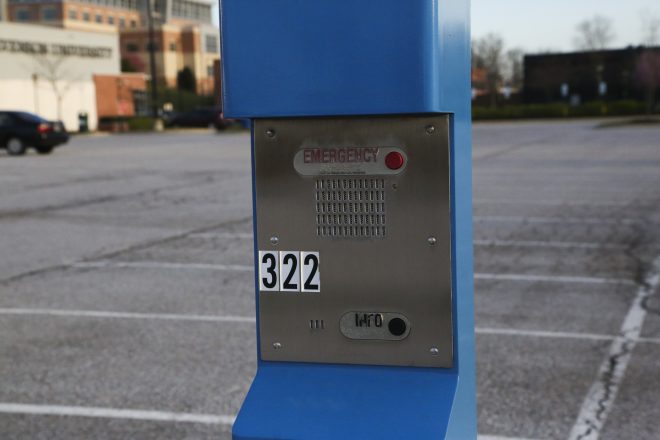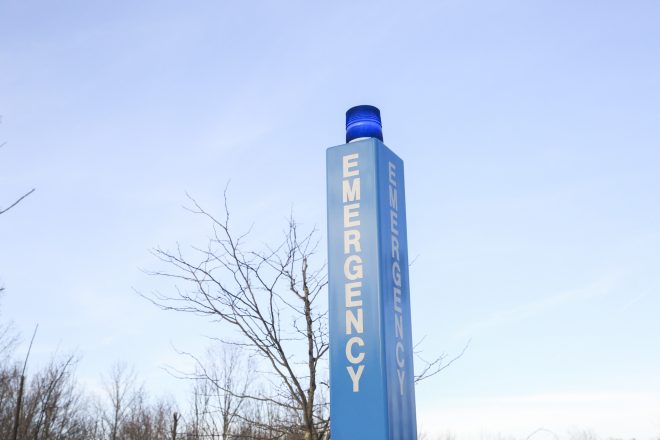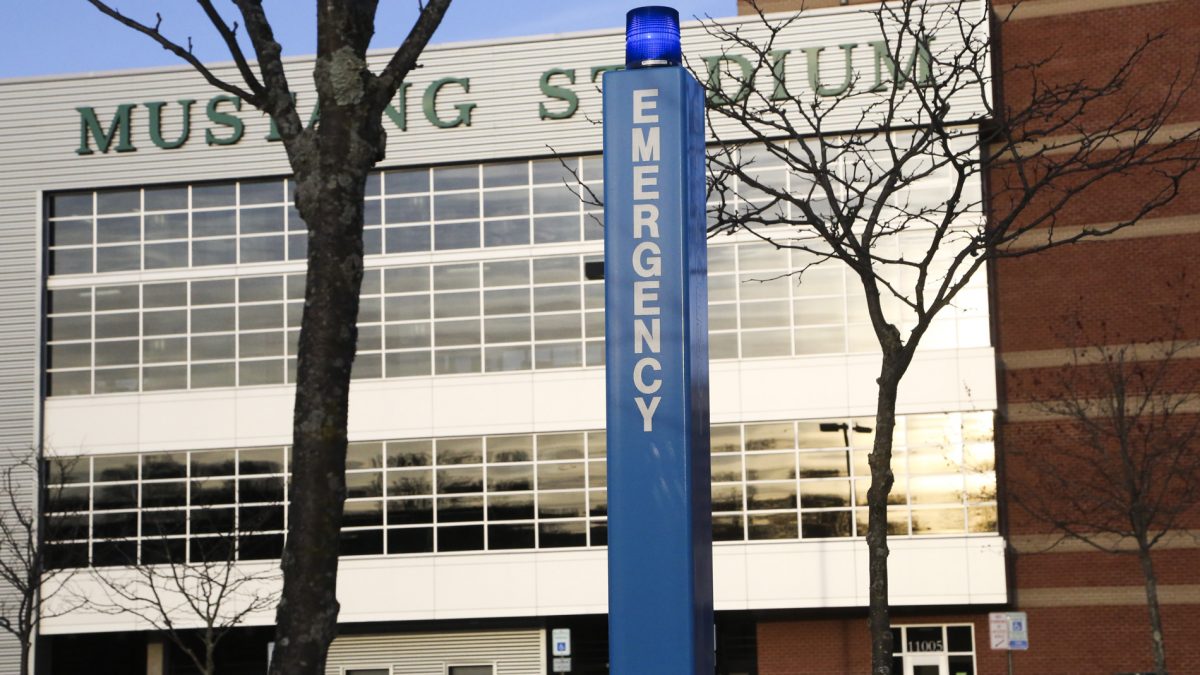“The university has two jobs: provide students with a quality education and keep them safe while they are away from home.”
Share
Story Topics
Things have changed on the Stevenson University campus since 2019, when an initial BGE Safety Grant supported the purchase of emergency landline phones topped with a blue light and installed at strategic locations around the school’s three campuses. If everyone has a cell phone these days, why were these needed?
According to Tim Ostendart from the college’s Facilities and Security department, there are several scenarios where these freestanding phones can provide help or save a life. “What if you are accosted and your phone is taken from you?” explains Ostendart. “Cell phones can get lost, broken, have no signal and are notably not accurate in pinpointing your location.” The emergency phones connect directly to security at each campus, where an officer can train any of their 400 cameras on the caller’s location.

Campus protocols changed drastically last year in response to the pandemic, making channels of communication even more necessary. Last year, courtesy of its second BGE grant, the school purchased a base station radio that allows security staff from each campus to speak directly to each other without the time delay of making a phone call. Then in 2021, using its third grant, the college secured 10 handheld radio units (walkie-talkies) that help its thirty eight part-time officers keep better track of the comings and goings of the 1,000 students who are still living on campus, despite most classes being conducted online.
In keeping with the health department guidelines for COVID-19, students are not permitted visitors and no students are allowed in dorms where they did not live. Guards routinely use the new handheld radios to verify which dorms students live in, and to report if they observe any large gatherings that don’t observe social distancing limits.
Luckily the campus had no major outbreaks. Sports were curtailed from August through December last year, and students were routinely tested then quarantined and contact traced if found positive for COVID. There was also a special building where COVID positive students could quarantine.
“It was quite a year, but 2021 is looking up,” said Ostendart. “We have new athletic fields opening near Rosewood Lane that we expect will see games this spring. And almost all classes are planning to be in-person for the fall semester.” Safety protocols will stay in place for as long as the county health department recommends because, he says, “The university has two jobs: provide students with a quality education and keep them safe while they are away from home.”

__________________________________________________
BGE’s Emergency Response and Safety Grants program supports nonprofit emergency response and public safety organizations throughout BGE’s service area. Over the last nine years, BGE has provided over $2.5 million to 470 nonprofit organizations who share BGE’s commitment to the safety of central Maryland residents. Grants of up to $10,000 are available for eligible 501c3 organizations. In addition to supporting the emergency responder community in Maryland, BGE provides training for fire, police, 911 centers and emergency management organizations who routinely work around utility equipment.

